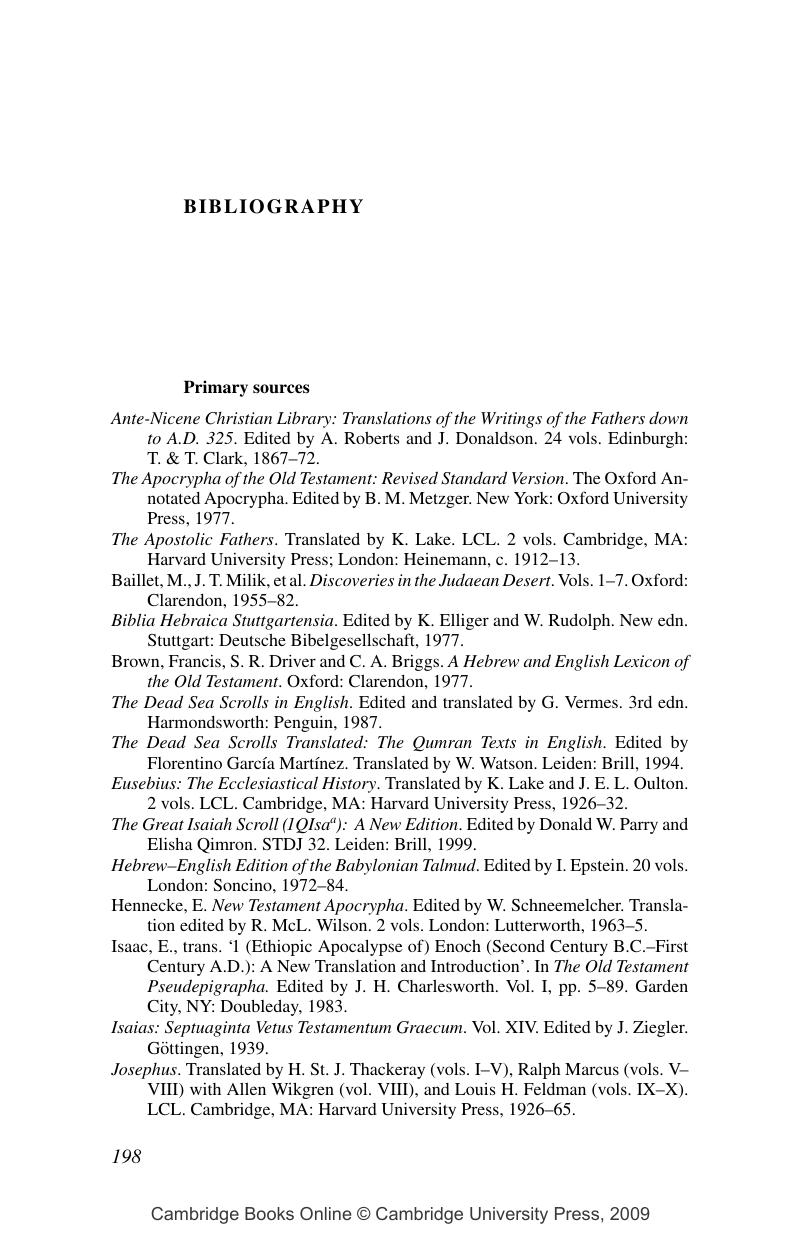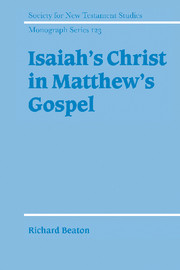Book contents
- Frontmatter
- Contents
- Preface
- List of abbreviations
- 1 Introduction
- 2 History of research
- 3 Texts and early Jewish exegesis
- 4 Isaianic formula quotations in Matthew
- 5 Isaiah 42.1–4 within the context of Matthew 11–13
- 6 The christological contribution of Isaiah 42.1–4
- 7 Conclusion
- Bibliography
- Index of passages
- Index of modern authors
- Index of subjects
- References
Bibliography
Published online by Cambridge University Press: 22 September 2009
- Frontmatter
- Contents
- Preface
- List of abbreviations
- 1 Introduction
- 2 History of research
- 3 Texts and early Jewish exegesis
- 4 Isaianic formula quotations in Matthew
- 5 Isaiah 42.1–4 within the context of Matthew 11–13
- 6 The christological contribution of Isaiah 42.1–4
- 7 Conclusion
- Bibliography
- Index of passages
- Index of modern authors
- Index of subjects
- References
Summary

- Type
- Chapter
- Information
- Isaiah's Christ in Matthew's Gospel , pp. 198 - 224Publisher: Cambridge University PressPrint publication year: 2002



